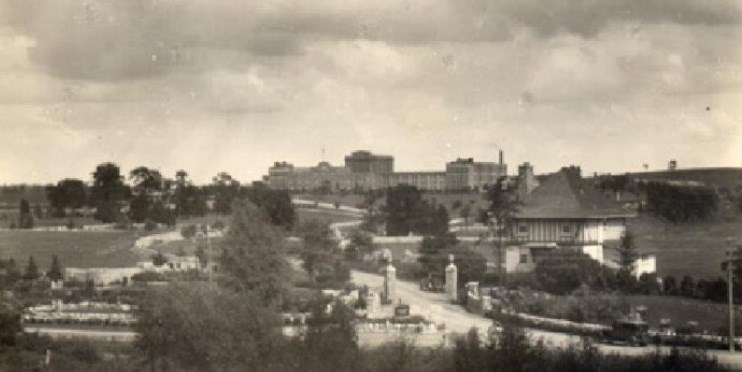The following article was submitted by Susan Ratcliffe regarding discussions over what parts of the old Ontario Reformatory lands and buildings should receive heritage protection.
Guelph celebrated its 194th birthday on April 23, a longevity John Galt could not have imagined when he cut down the maple tree on the banks of the Speed River. He commemorated the tree cutting on that rainy night with these eloquent words: “The silence of the woods, that echoed to the sound, was as the sigh of the solemn genius of the wilderness departing forever.”
A novelist and a poet by trade, his words resound through those 194 years and still apply today. We are still cutting down trees, clear cutting our landscapes and paving over our world with subdivisions and monster warehouses. Our souls and bodies cry out, seeking places where we can find the “silence of the woods” again.
Galt’s words and the story of our city’s founding on a rainy April night are part of our city’s heritage, a heritage that makes Guelph a unique place. Our lovely rivers, our limestone buildings, our rolling drumlins with pleasant river valleys and stunning views – all have their own stories.
On the 194th birthday of our city, I hope we can work together to preserve and pass on those unique places.
In June, city council will make important decisions about the future of one of our most important, most extensive unique landscapes – the Ontario Reformatory lands on York Road.
Longtime Guelph residents will tell you of family members who worked there, of marriages and picnics that took place there, of afternoons of fishing or dog-walking or bird-watching – and maybe of relatives who spent some time between the walls. Early newspaper accounts report hundreds of visitors each year who strolled the grounds admiring their beauty.
Since 1911, prison reports document the amount of food grown on the fields, the number of trout in the ponds, the fruit from the extensive orchard, and the prize-winning herd of dairy cattle housed in the huge barns. When you visit the Reformatory lands today, you will see only a rather neglected shadow of its former glory.
Pieces of the original 1,000 acres were sold off over the past 110 years. The farm operations were closed down, the farmlands and orchards are gone. After the Guelph Correctional Centre was closed in 2002, the buildings and grounds were left to deteriorate while the provincial government and the City of Guelph explored various options for the lands and buildings.
Meanwhile the prison buildings and the landscape have become a popular place again.
In 2009, more than 2,000 visitors lined up to tour the prison for Doors Open Guelph, and it is annually requested to be part of Doors Open again. Every week, hundreds of dog-walkers, bird-watchers and hikers stroll the grounds and walk the trails. For more than 10 years, the Yorklands Green Hub has advocated the creation of a sustainable living centre on a section of the land.
Now, the provincial government has posted the sale of the lands on the open market.
In 2009, they recognized the historic buildings as having provincial significance under Part III of the Ontario Heritage Act and have asked the City of Guelph to prepare to designate those buildings as a condition of sale.
Recognition of the historic value of the buildings is a good start, but it is not enough to save this whole landscape from the incursions of insensitive development. The buildings alone do not tell the whole story. If you have walked between the dry stone walls, or around the beautiful ponds, or explored the Eramosa River banks, or the amazing walls of the old quarry, you know this landscape is a unique treasure that deserves to be saved as a whole for the people of Guelph and Ontario.
Under Part V of the Ontario Heritage Act, a municipality can protect a landscape along with all the structures and buildings by designating it as a Cultural Heritage Landscape (CHL) or a Heritage Conservation District (HCD). This designation could preserve the whole 225 acres, along with the historic jail buildings, the ponds, the Clythe Creek with its waterfalls and bridges, the dry stone walls, the quarry area, the banks of the Eramosa River and the wooden trestle bridge.
An HCD designation would provide huge benefits to the city. The reformatory lands would make a spectacular park for Guelph’s growing population. The prison buildings with their unique history would be a compelling draw for tourism and bring tourists who would support local restaurants, hotels and businesses.
“Prison tourism” attracts thousands of people and millions of dollars to towns like Kingston, Cobourg, Goderich.
An extensive trail system would bring avid hikers, cyclists and nature enthusiasts who are seeking exercise, biodiversity and beauty in “the silence of the woods."
The lands of the former Ontario Reformatory/Guelph Correctional Centre are an irreplaceable treasure. It was designed as an innovative way to treat criminals and the insane, and, as a gift to the City of Guelph. It could be preserved as a healthy and beautiful oasis for people starved for nature.
As Prince Harry said in a recent video about African Parks, “Places we are protecting now will ensure a healthy future for us all.”



